Interviews
We’re ready to deal with challenges to MCC projects’ timely implementation
Nepal needs to figure out how to make itself as attractive as possible, and how to make it as easy as possible to do business.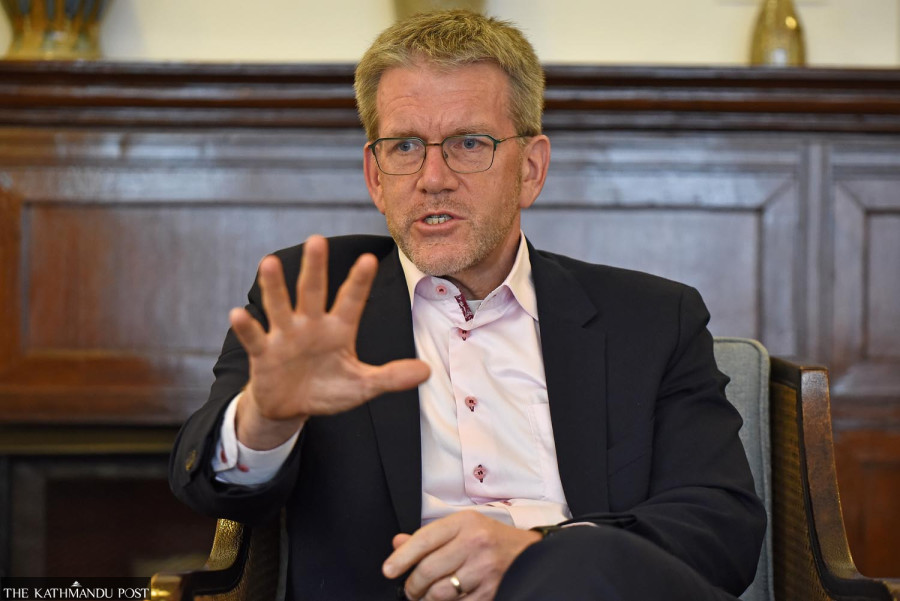
Umesh Chauhan & Biswas Baral
Dean Richard Thompson recently completed his two years as the American ambassador to Nepal. Arriving here just before the 2022 elections, he has since closely observed Nepali politics and society. Umesh Chauhan and Biswas Baral recently sat down with Thompson to reflect on his time in Nepal, major US projects in the country including those under the MCC, geopolitical competition with China, trade, and a range of other issues.
How have you seen Nepali politics evolve in the two years you have been in the country? What events stood out?
I’ve seen a lot of Nepali politics. Obviously, there’s been a lot of changes. I got here right before the national elections in November 2022. It was really great to see the democratic process play out here, to see Nepalis turn out in such great numbers and make their choices known.
Democracy is such a vibrant and colourful exercise anywhere in the world. Nepal did not disappoint on that front. It's been fascinating to watch it evolve, to watch the governments come in different formations.
What’s been great is the commitment we’ve seen from successive groups in government to moving forward and carrying forward the [bilateral] partnership and building on projects. I’ve also been amazed at some of the innovative things happening in various sectors of the economy.
There has been some very exciting work in the IT sector, for example, that runs the gamut from more traditional back-office type operations to cutting-edge AI research, to developing educational apps for school students, to things like what we have been sponsoring at our Content Creator’s Mela these past two years. It is great to see Nepalis show lots of creativity in expressing themselves and talking about their culture and their society in so many different ways. Across the board, I’d say the experience has been unique.
How have the Nepal-US relations evolved over the past 77 years of diplomatic ties? What are the salient features of the relationship?
What I would say is we’ve always tried to listen, to engage with the Nepali society. Based on that, I think one of the things that we’ve done is refine the range of products.
The Peace Corps, the USAID, the Millennium Challenge Corporation, the Development Finance Corporation, or other elements of our assistance and development commitments—these are different tools that can be employed. And Nepal has continually expanded its capacity to take advantage of them. The US has been able to increase the number of tools and assets, if you will, that Nepal can use to build its economy.
I’m very proud of the fact that we have done this primarily through grant-based assistance, so that there is little in terms of downsides. At the same time, we have focused on different segments of the economy or society, for example, through the Development Finance Corporation, we’re now able to target and work with the financial sector to create more opportunities for small and medium-sized enterprises, particularly women-run enterprises. Through the USAID, we can use more of the traditional mechanisms of assistance.
The Millennium Challenge Corporation kind of speaks for itself. It targets large-scale, massive infrastructure type projects that aim to be transformative in terms of Nepal’s economy. It has helped grow the road and infrastructure network and show new technology that can help expand that network and make roads safer, more reliable, and easier to maintain. It has helped build an electricity infrastructure that allows Nepal, first and foremost, to internally use the green hydropower that's at its disposal, but there will be excess capacity even to export it to the region to earn additional income.
So I’m pretty excited about what I’ve seen happen over the past 77 years, and where we are today. I’m also extremely positive about building on where we are now.
Can you give us a status of the implementation of projects under the Millennium Challenge Account Nepal?
In the MCC, energy, obviously, is a high-priority area and so is transportation. Where we are with the projects themselves is we have let out the contracts for the sub-stations, for the 18-kilometre cross-border transmission line, and we have reissued the tender for the 297-kilometre broader transmission line package that had to be revised due to some cost changes over the time it took to implement that piece of the package.
But we’re pretty positive about getting that back on track by the end of the year and putting the project firmly on the right footing for a five-year completion timeline.
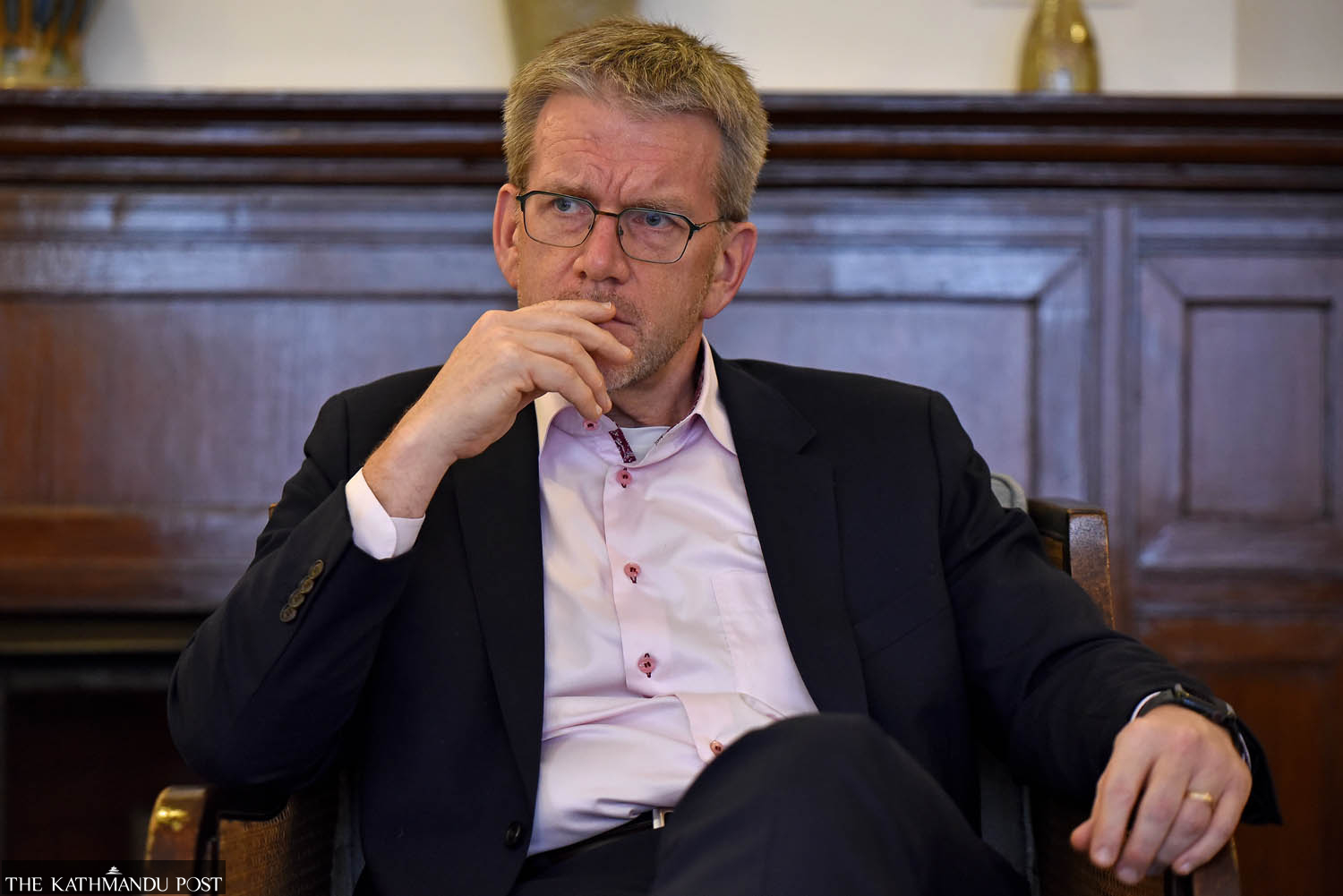
But there have also been hurdles, right? Do you still expect the transmission lines and road projects to be completed in five years?
I expect there to be more hurdles. The biggest challenge was when the bids came back for the 297-kilometre transmission line. We had a number of delays there from Covid to worldwide inflation, to supply chain shifts that I don’t think people had foreseen completely. I’m not surprised. But the MCC has had a lot of experience around the world with these projects.
It builds into this assumption that there will be challenges, there will be situations that need to be rethought and overcome. The real trick is making sure we move forward in a way that’s smart and focused on keeping things on time and on track. We're fortunate in the case of Nepal because we have a partner that has so heavily invested its own resources into the project.
We have our $500 million grant and Nepal is putting in almost $200 million. It’s been made a national pride project. Look, other things will inevitably come up. But we believe that we have a good team that’s ready to tackle those types of challenges and press forward.
At the end of the day, this can serve as a really positive model for how development assistance and how large-scale infrastructure projects can be implemented in a partnership that is largely the result of an internal domestic process. Don’t forget, Nepal requested the MCC project. The government of Nepal, through a consultative process, developed the idea, designed the project, and is now its lead implementer.
We’re a financier and a partner but it is very much a Nepal-owned effort. Talking about challenges, there are many local governments and we have to deal with them every 10 to 15 kilometres in the project areas. Different communities have different concerns and priorities. This can add to some difficulty.
What do you think will happen to the project if it cannot meet the five-year deadline?
The fate of the project is to be completed in its entirety in five years. I can't speak to whether there’s going to be a particular challenge to delay it by six months or seven months or something like that. Right now, in our planning and projection, we hope that we can move it forward within the timeline.
If it needs to go beyond that, we’ll work closely with our partner and figure it out. I’m confident that the $500 million that the US government is providing will be spent within the five years and it will lay a firm foundation for the completion of the project.
But coming back to your scenario, indeed, you have different communities. A lot of people are affected by this. Now, on the one hand, that's why we encourage and insist on a consultative process, on everything being as transparent as possible so people know exactly what’s going to happen, that they know what the money is being spent on, what the effects will be in terms of how many trees will have to be cut down or what roads will be built where. That’s very important to us: no surprises for the communities that are out there.
I think that we will rely on a lot of that effort to help us propel the project forward if things do get challenging on other fronts as well.
Like you said, the project does need to be completed by a deadline of five years. Just in case it doesn’t, what happens?
Look, it is an ambitious undertaking. There’s no question about it, right? And the Millennium Challenge Corporation is committed to making it happen within that five-year period. The MCA Nepal is committed to making it happen within that five-year period. But they’re also working closely together to make sure that it’s being done in a proper way, in a transparent way, and I’m confident that we will be able to complete what we need to complete. I’m also sure there’s a firm commitment from the government that if there’s a little piece left over here or there, to make sure it goes forward.
I don’t worry about the ultimate completion of the project. I’m more focused on how we get it going as quickly as possible, because just the implementation of the project itself should employ close to 10,000 Nepalis, right? I really want communities to start to see the benefit of the project as soon as possible, because that’s where the transformative nature of it comes into play. Part of it is building it. Part of it is implementing it. Part of it is learning from that process. But then having this infrastructure in place, that’s what really changes the dynamic in Nepal and in the economic well-being of the country.
Some fear that a failure to complete the project on time could even create rifts in our bilateral ties.
I don’t think they should be fearful. We are partners in this, and if there’s any issue, if we're going to work through it together. What we should be doing is focusing entirely on implementing the project to its fullest potential as quickly as possible.
Let’s move to geopolitics. What we see in the region is seemingly an exclusivist India-China geopolitical competition. Indians appear reluctant to work with the regimes that work closely with China. It's almost like they are saying, it's either the Chinese or us. How do you see this geopolitical dynamics playing out in Nepal? And where do the Americans fit in this picture?
Yeah, it’s a good question in terms of the dynamic that’s in play today and where things are headed. We have of course been watching the India-China relationship and its development over the past few years with some degree of concern. Obviously, there was conflict there some years ago, and I think they’ve been trying to manage that since.
And there’s no question that other countries in the region feel that very powerfully. From our standpoint, what we would like to see is the countries of the region—and particularly Nepal because that’s where I’m accredited and that’s where I have some level of knowledge—exercise their sovereignty and to have the space that they need to make decisions about they own future on behalf of their people in a positive way.
We don’t believe countries should be asked to choose. We fully expect that Nepal is going to have good relations with India and China. They’re two neighbours. They’re large countries. They’re important countries in the region. It’s critically important for Nepal that it works with and benefits from both India and China.
At the same time, we see no reason that should have any effect on our relationship with Nepal, and no reason Nepal should not be fully able to take full advantage of what the US has to offer. We will continue to watch and continue to work closely with Nepal as a partner and to encourage it to exercise its sovereignty and its decision-making in a way that benefits the Nepali people.
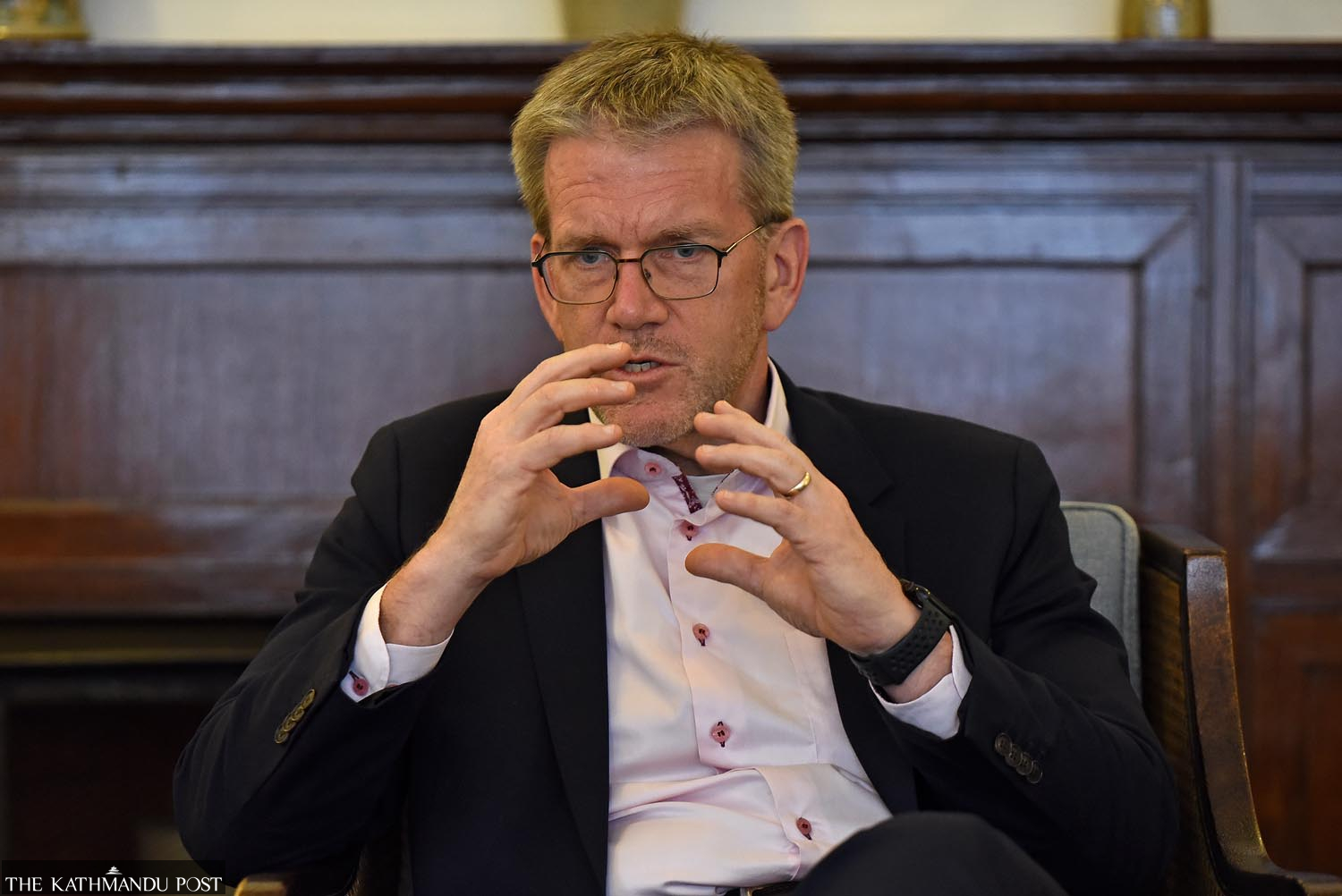
The US-China relations are also very dicey at the moment. Surely this has some effect on how the US perceives the Chinese role around the world, including in Nepal.
We had a recent high-level visit by our National Security Advisor [to China]. We’ve had recent visits by the Secretary of State, the Secretary of Commerce, the Secretary of Treasury. I think there’s a real effort to try to manage what we all acknowledge is as a competition that’s underway, in a way that’s positive and can maybe move us more towards some type of cooperative element.
That channel should continue to be pursued by the US and China, but it’s not reflective of our relationship with Nepal, or our relationship with India. This is about what we can do together [with Nepal]. I’m not going to comment on what other countries may be saying about us, how they may be trying to influence us.
I would commit to us remaining as transparent as possible so Nepalis can make their own decisions about what's happening by our relationship.
Recently, the Americans were blamed for ousting Sheikh Hasina from Bangladesh. The US is also often accused of meddling in the domestic affairs of other South Asian states, and in other parts of the world for that matter. How do you respond to this accusation?
First off, I think you’ve got to take with a grain of salt anything that’s being said by someone who’s been forced to flee their country. The United States simply does not meddle in the internal politics of other countries. We work very hard to be as transparent as we possibly can about our relationships, about what we’re doing, about what we intend.
That’s not to say that if we disagree vehemently with a country about a certain policy or a certain issue, we won’t raise it. But this idea that the US would find some benefit in enacting a change in government like that, it simply isn’t part of our repertoire of diplomacy. What we rather look to do is build the strongest relationships that we can.
We love to do that primarily through people-to-people relationships and sponsoring as much development opportunity as we possibly can with our partner countries. So, I put no stock in these types of rumours and statements.
There is also this sentiment that the Americans and the Indians are increasingly working together on strategic issues, and the same is seen even in South Asia.
Certainly, there’s been a huge growth in the strategic partnership between the US and India. I think we want to see that continue to move forward in a positive way. At the same time, there have been disagreements between the US and India on various fronts, just as we have disagreements with many of our partners. And we try to deal with those in a proactive, professional and productive way.
But, again, we see our relationship with each individual country through a bilateral lens. So if there are ways that the US and India working together can be beneficial, and another country agrees to such a cooperation, fine. But when it comes to Nepal, we’re going to base our relationship and our efforts first and foremost on our bilateral discussions and our bilateral relationship.
Even as we speak, the US and Nepali armies are undertaking joint training in Nepal. How would you characterise the relations between the two armies?
Yeah, the PAC ANGEL exercise is going on, focused on disaster relief, humanitarian assistance. The relationship between the two militaries has been strong, it remains strong, and I think it will continue to be strong primarily because we focus it on the areas Nepal wants to focus on—which is building a Nepal army that is capable of responding to disasters, providing humanitarian assistance, and then serving as part of the global peacekeeping network through the United Nations as the largest contributor force of peacekeepers. It’s in our interest to see Nepal continue to professionalise and develop its capacity on those fronts. That’s where our focus is, and that’s where we will continue to make efforts.
There has also been a lot of debate in Nepal on the Indo-Pacific Strategy (IPS) and its applicability to South Asia. What is the current state of its application?
The Indo-Pacific Strategy is a broad, big strategy by the United States government about how it looks at the entire region. And so it’s about how we create an open, independent, sovereign Indo-Pacific region for the benefit of all the people in the region.
What we will continue to do is employ it to build relationships we have with each of the countries in the region. How can we continue to support democratic development? How can we continue to support economic development? Let’s not forget a huge portion, maybe 60 percent of the world’s commerce transits the Indo-Pacific corridor in some way, shape, or form every year.
It’s in everyone’s interest for that to remain open and free. And for the countries of the region to be able to act in a sovereign way in their own interests.
There is also a sizable section of Nepalis who believe that the IPS was brought with the intent of countering China’s Belt and Road Initiative (BRI), and that Nepal is struggling to find a balance between the two. What is your reading?
The USAID, the MCC, the Development Finance Corporation, all of our development programmes have a singular purpose, which is to work with our bilateral partners to grow their economies, to make them more able to meet the needs of their people. That’s the goal. That's how they were designed. And that’s how we will continue to treat them.
The BRI is China's initiative. It’s pushing that forward. It’s up to each country to decide how it wants to engage with others. We believe the model of, say, a USAID or an MCC is proving itself to be beneficial to countries, as they are grant-based and economic growth oriented. We’ll continue to push them because we think the data and historical experience we’ve had support them.
I think it’s incumbent on us to try to help all of our partners relate to us as equals in any realm that we’re working together. That’s critically important and something we have to acknowledge and something we have to make sure that they’re able to acknowledge.
It's about building trust, about showing that our intent is correct, that we have the best interest of our partners in mind, and that we’re applying the same and transparent standards universally.
For example, on the MCC, we’ve published everything on the internet. If anybody in Nepal has a question about any aspect of the project, they can go to the website, they can read about the project, they can see the blueprints, they can know exactly what it’s going to involve. That's how I think we build relationships.
I think if I came to Nepal and said, hey, I want to do X project because I want to counter this country, I don’t think I would get very good reception. We just don’t look at the world that way. It’s not a healthy approach in the long run.
But a bilateral focus that seeks to empower the people of a country—that’s where I think we have the best chance of moving forward.
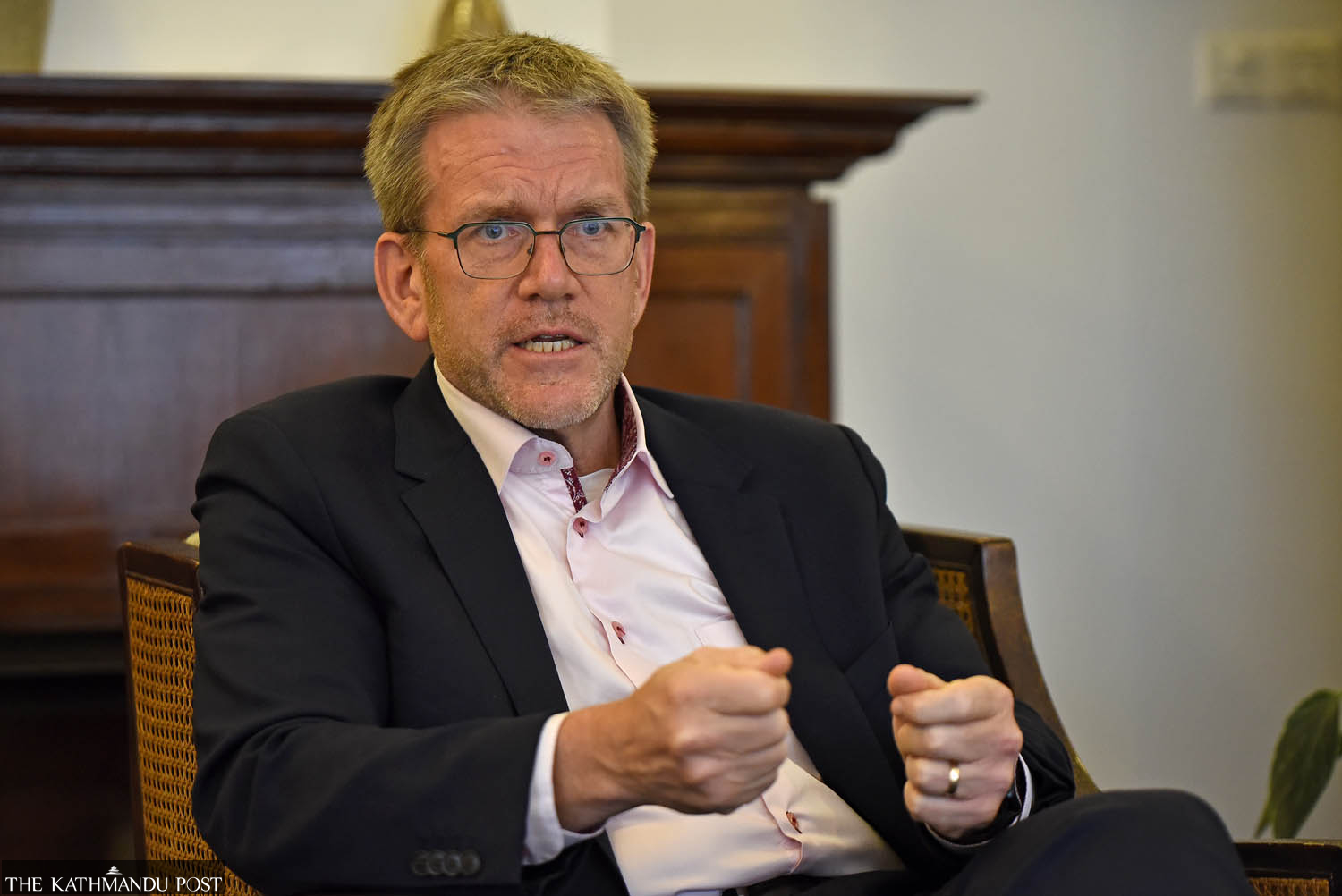
Nepal’s Parliament has finally passed an amendment to the transitional justice law. How does the US see this development? How do you see the transitional justice process progressing?
I think this is a really important step in the process. I would say that we remain positive about the way it's going and we are looking to see how we can help. You noted, I’m sure, that we joined a number of other partner countries in issuing a statement of support after the Parliament passed it.
We all know bringing a conflict of this scale to conclusion is always going to be a challenge. The TJ legislation has passed, which was a tough hurdle, but implementation will also be difficult.
We’re looking forward to figuring out how we can be supportive, and how other partners can be supportive. Some of that may be through bilateral means. Some of it may be through multilateral means.
But what I remain encouraged about, in particular, is, we’ve always said this needs to be a Nepali-run process. It has been. That it needs to be victim-centric. I believe that it is. And so we need to make sure the consultative piece of this remains alive as you move to implementation, so that the victims groups, so that the child soldier groups, so that other entities that have been involved continue to have a voice and continue to work together to figure out how to resolve this, to make reparations work, to bring justice in those cases. And so, we are positive.
Thousands of Nepali youths are leaving the country every single day in search of better jobs. In this light, do you see the prospect of greater American FDI helping Nepal build a more robust economy that can create enough good jobs?
I do. At the beginning of the interview, I talked about some sectors of the economy that are quite exciting right now. I think you’re seeing a lot of interest from the US in the IT sector, the tourism sector, in the health sector, and in the energy sector as it continues to develop.
We’re very keen to look for ways to bring more US investment here, whether it’s through equity sort of vehicles, or direct bilateral investments. I think that can also be positive. I think Nepal did a good job in setting up that April Investment Summit. That sent a really positive signal. You’ll recall that we had a representative from the US Chamber of Commerce, Atul Keshap, come out for that. We’ve had a great run of senior US visitors out here over the last year and a half.
I think the key right now is for Nepal, through its private sector, through its government, to figure out how to make the environment for investment in Nepal as attractive as it can possibly be. In this interview, we’ve talked about the idea of competition between countries. One place where I will absolutely acknowledge there’s competition is in trying to attract investment.
And so Nepal needs to figure out how to make itself as attractive as possible, and how to make it as easy as possible to do business. That helps not only investments that come from other countries, but makes it easier for Nepalis to start businesses, right? It makes it easier for Nepalis to operate and do what they want. And so, in addition to welcoming, say, US companies or British companies or Canadian companies, we would also love to see Nepalis who have gone abroad come back and start to help in building the economy here.
We’ve seen how capable and how dynamic they are in building other people’s economies. Let’s do the same here at home.
I mentioned that the trade and investment framework talks that we have with Nepal are in their seventh round. I look forward to, in the rest of my tenure here, to continue to build the momentum that will allow investment to take shape and the economy here to thrive.




 12.12°C Kathmandu
12.12°C Kathmandu

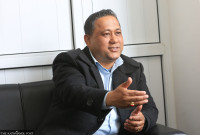

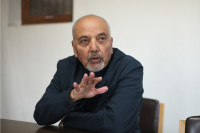


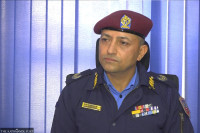
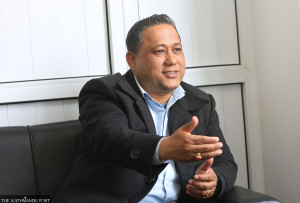



%20(1).jpg&w=300&height=200)

